
Saarland is the smallest territory in Germany, with the exception of three major cities – Berlin, Hamburg and Bremen, which have this status. In terms of number of inhabitants, it is in second to last place – before Bremen. But there are many attractions here, and for all tastes. Let’s start our acquaintance in the capital – Saarbrücken.
Saarbrücken
The main architectural symbol of Saarbrücken is the 18th-century Baroque church Ludwigskirche. This landmark of the capital of the Saar is the most significant monument of Baroque Holy Protestant architecture in Germany, along with the Frauenkirche in Dresden and St Michael’s Church in Hamburg.
Culinary District
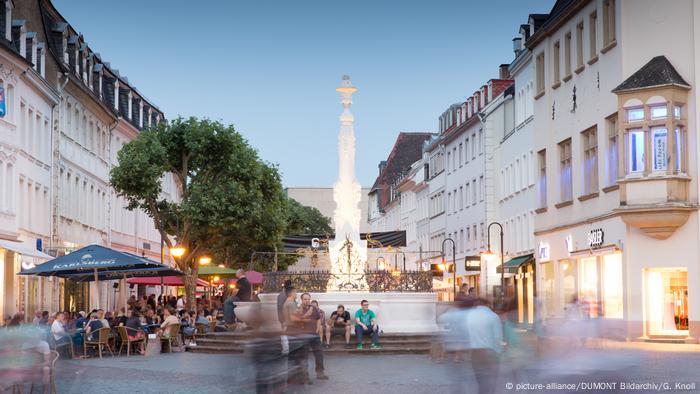
Cafes and restaurants on St John’s Square in Saarbrücken, named after the city’s patron saint
Saar is located in southwest Germany and borders France and Luxembourg. This neighborhood affects the kitchen. The region is famous among gourmets. Many of the local chefs rely on local produce and successfully combine modern and traditional recipes.
Saarschleife
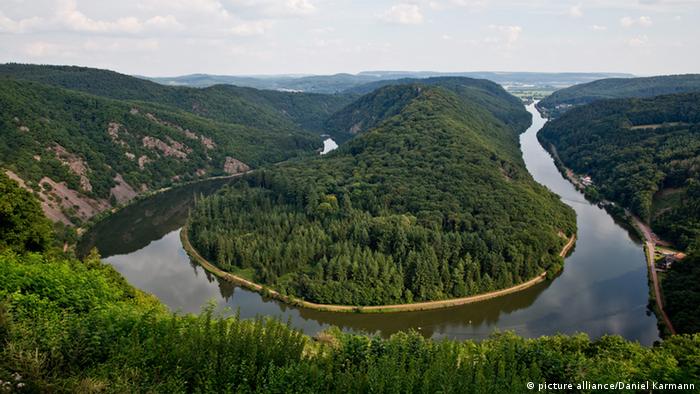
Saar River Circuit
This land has many natural attractions. The most famous of these is the Saarschleife – a picturesque circuit that the river Saar makes in the Mettlach region. Victor Hugo admired this place while traveling through Germany. Modern tourists can enjoy this panorama by visiting the Cloef observation deck.
“Saar Tuscany”
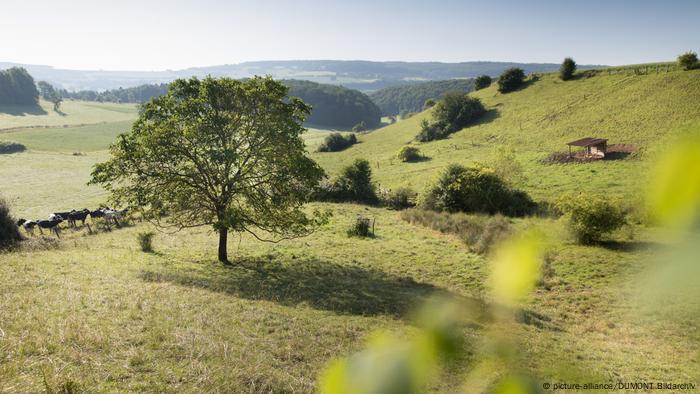
UNESCO Biosphere Reserve Bliesgau
About 60 tourist routes for walking and cycling have been established in the Saar. Especially popular is the Saar-Hunsrück-Steig trail, which several years ago was considered the most beautiful trail of the year in Germany. Just past the Saarschleife we just saw, and in this photo – the UNESCO Bliesgau Biosphere Reserve, nicknamed “Saar Tuscany”.
“Völklinger Hutte”
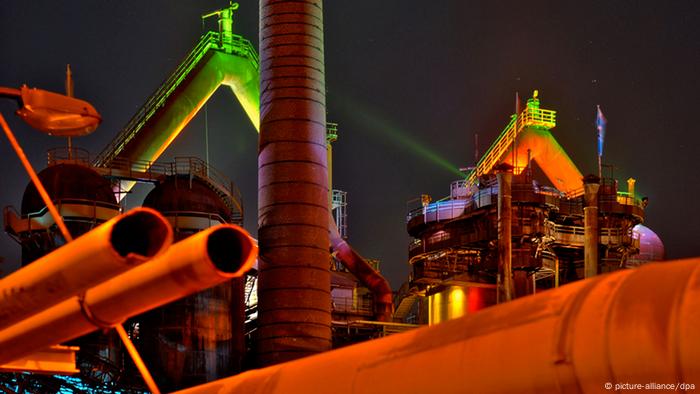
Night lighting of an industrial monument
Following the natural beauties, we present an industrial attraction – the “Völklinger Hütte”. In 1994, the former steelworks at Völklingen became the first industrial monument to be included in the UNESCO World Heritage List. For over a hundred years it was Germany’s largest iron and steel factory. Now there are exhibitions and concerts.
ancient temples
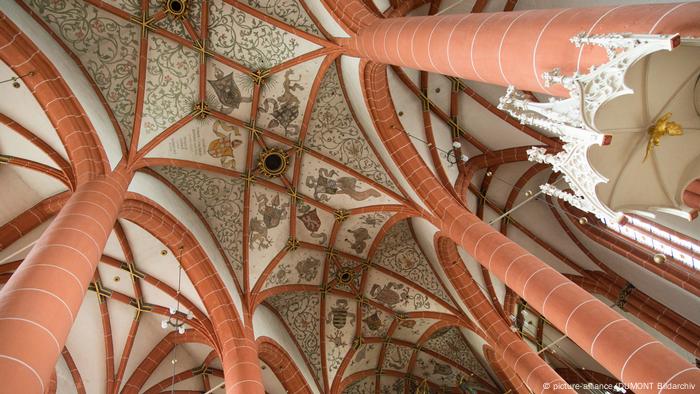
Gothic vaults of the Basilica of San Vendelino
We started our journey near a baroque temple, but there are, of course, older churches in the Saar. Among them is the late Gothic basilica of St. Wendelin (Wendalinusbasilika) in the city of St. Wendel. This is one of the most significant sacred buildings in the federal state.
ancient romans

Villa Romana Borg
Let’s dig even deeper and get to the remains of the ancient Romans. They left many of them in what is now the Saar. For example, in the Merzig-Wadern area is the Roman Villa Borg – an open-air archaeological museum.
Saar “Gondwana”
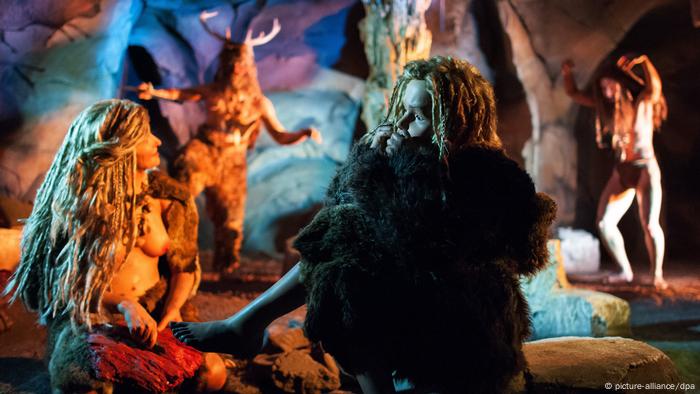
Section of the exhibition dedicated to Cro-Magnons – the first representatives of modern man
We stay in the “time machine” and go to prehistoric times. In 2008, the science and entertainment park “Gondwana – Das Praehistorium” was opened on the territory of a former coal mine in the Schiffweiler area. The exhibits tell about the Big Bang, the origin of life on Earth, the extinction of dinosaurs, as well as the history of human civilization.
Schlossberg
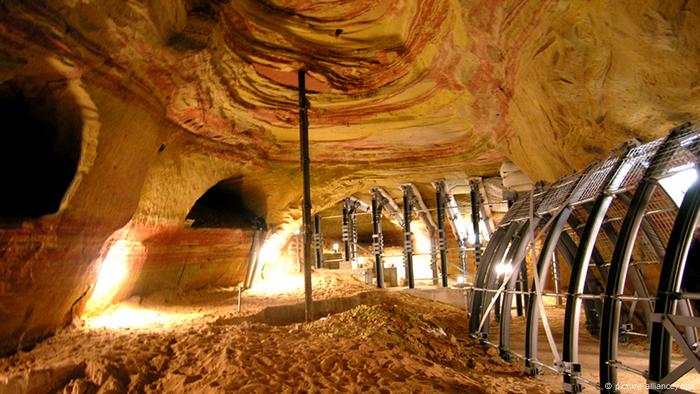
About 60,000 people visit these caves every year.
From the old coal mine – to the caves formed as a result of the extraction of heterogeneous sandstone. They are located under the Schlossberg mountain in Homburg and are considered to be the largest caves in Europe. There are a total of twelve underground levels. The sand was intended, in particular, for the production of glass. Later, the caves were used to store supplies for the fortress, which stood on the mountain.
wolf park

Werner Freund with his wolves
We will end our acquaintance with Saar in the city of Merzig. In 1972, the “Parque dos Lobos” was created here. Its founder Werner Freund (1933-2014) devoted more than thirty years of his life to the study of these animals. In the park that bears his name, there are seven enclosures, each of which is home to two to six wolves – Arctic, Siberian, European and Canadian.
Source: DW
Lori Barajas is an accomplished journalist, known for her insightful and thought-provoking writing on economy. She currently works as a writer at 247 news reel. With a passion for understanding the economy, Lori’s writing delves deep into the financial issues that matter most, providing readers with a unique perspective on current events.